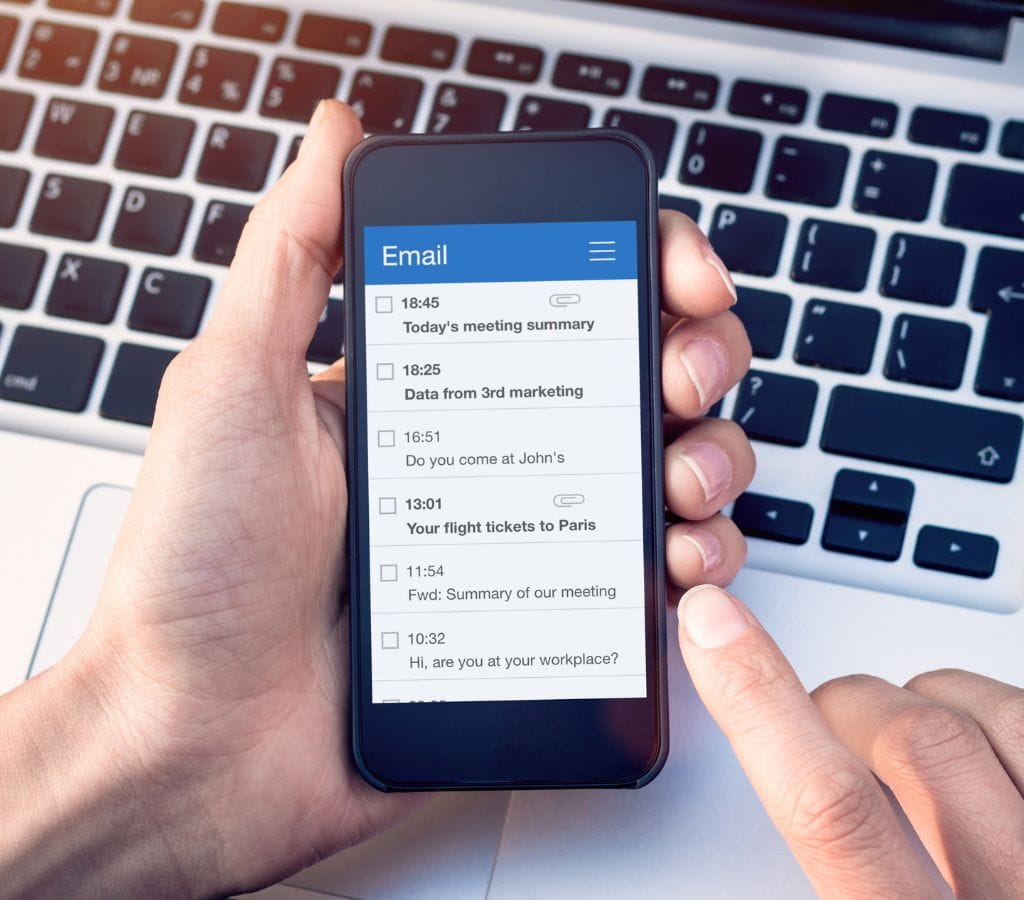In today's fast-paced digital world, email is important for communication and productivity. However, the "RE." makes email easier to read and manage. Knowing what 'RE' is and how to use it in email will help you communicate properly and avoid misunderstandings. This blog post will explain what 'RE' is, where it comes from, how to use it effectively, and how to avoid common mistakes and misunderstandings in email threads. Let's learn what the "RE" symbol represents in email and understand this important aspect of digital communication.
Why Email Communication is Important
The way we connect and talk to each other in personal and business settings has changed a lot because of email. Email has become the standard way to send notes, share information, and work. Email is an important tool for communication that people need to understand in order to work well because it is quick, easy, and widely used.
In this part, we'll talk about the most basic parts of email conversation. We will talk about email's history and how it has changed over time. We will also talk about its place in modern society and the advantages it has over other ways of communicating. By learning email communication, you can better use 'RE' in your emails.

What is RE in Email?
'RE' is a word that comes up a lot in our email messages. But what does it really mean? The word "RE" and what it means in the context of email communication will be discussed in this part.
The Origin and Meaning of RE
Before we can figure out what "RE" means, we need to look at where it came from. The word "RE" is taken from the Latin in re, which means "in the matter of." However, in email, 'RE' becomes a subject abbreviation that stands for "reply." It's used to let people know that an answer is being sent to an earlier email or message.
RE Meaning in Email
'RE's main job is to make email lines clearer and easier to follow. To reply to an email in most email applications, click the "Reply" button or select it from the menu. The subject line of your reply and the email you're replying to both include "RE" when you do this. These characters ('RE') enable readers to realize that your email is a direct response and maintain the email thread.
Also, "RE" can be written in different ways, like "Re:" "Re-" or "Re." based on the email client you use or your preference. Even though the format may be different, the goal is always the same: to reply to a previous email.
After explaining "RE" and how to use it in email, we can discuss why it's crucial in email threads and how it improves communication.
Why RE is Important in Email Threads
Email threads can quickly get long and complicated, especially in group discussions. Without a clear structure, it's hard to follow information and interpret messages. This is where the significance of "RE" in email chains is clear. This part will explain why "RE" is important in email communication and how it streamlines conversations.
Arrange and Organize Your Email Messages
'RE' is important in email threads because it helps keep the conversation in order. When you use "RE" in the subject line of a reply, it's easy to see that the message is in response to an earlier email. This makes it easy for people to see how two messages are related and follow the conversation's chronological order. It's much easier to find your way through a long email thread when you clearly mark each reply with "RE" and the original subject line.
Keeping from Miscommunication
Using "RE" in email threads is also important because it helps people understand each other better. During an email conversation between more than one person, it is normal for different topics or subtopics to come up. Without the period ('RE'), it's hard to tell which message goes with which topic. This can make things unclear and even cause people to miss important information. When you use "RE," each reply is linked to a specific message. This makes sure that the intended recipient knows what's going on and can react appropriately.
'RE' also helps to avoid repeating facts. When you respond to an email, you don't have to repeat everything that was said in the original message. Putting "RE" in the subject line lets people know that the reply is a reply to a specific message, so they can look at the original message to get more information. This cuts down on conversational clutter and saves time.
Finally, it's impossible to say enough about how important "RE" is in email threads. It is a very important part of keeping email conversations clear, organized, and in order. When you use "RE," you make sure that your messages are easy to find, avoid misunderstandings, and help talks go smoothly. In the next part, we will talk about the right way to use "RE" in email communication.

How to Use RE Correctly in Email
Adding 'RE' to the subject line of an email is not the only thing that it means. To make sure you use "RE" correctly and successfully, there are some rules of manners you should follow. This section will talk about the right way to use the letter "RE" in email, including when to use it and how to format it properly in the subject line.
When to Use RE
The first thing you should think about when using "RE" is whether or not you need to include it in the subject line of your email. 'RE' should be used when you want to reply directly to an email that was sent before. It lets people know that your email is part of a conversation that's already going on and makes it easy for them to see how two messages are related.
There are times, though, when "RE" might not be needed. For instance, if you want to start a new conversation or topic, you might want to use a different subject line without the "RE" symbol. In this case, it's important to use a clear, concise subject line that correctly describes what the email is about.
How to Put RE in the Subject Line of an Email Correctly
It is important to use the right style when adding "RE" to the subject line of an email to make sure that everything is clear and consistent. Make sure you remember these rules:
- 'RE' should come before the subject line: 'RE' should be at the beginning of the subject line, followed by a colon (:) or a space, so it's easy to see. Like "RE: Meeting Agenda" or "RE Meeting Agenda."
- Add the original subject: It is important to add the original subject of the email you are replying to along with "RE." This makes it easy for people to find the post and understand what's going on. For instance, "RE: Meeting Agenda" (original subject: Team Meeting – June 1st).
- Avoid excessive use of 'RE': It's best not to use "RE" too much in a single email thread. If you have to respond more than once in a short amount of time, it's best to only use "RE" in the first one and the recipient's name or a summary in the rest. In this way, the subject line stays short and doesn't get overwhelming.
By following these rules of proper behavior, you will be able to use "RE" correctly and keep your email conversations organized, clear, and professional.

Common RE Mistakes and Misunderstandings
'RE' is a useful tool for email communication, but if it's not used properly, it can lead to mistakes and misunderstandings. In this last part, we'll talk about some of these pitfalls to help you avoid any communication problems that might happen.
Misunderstandings of the Word RE
People often misinterpret "RE" in the topic line as a request or something that needs action. If all you want to do is communicate, an email with "RE" in it may confuse people. To avoid this, make sure it's clear in the body of your email whether you're sending an answer or a request.
Overusing RE in Email Communication
Also, using "RE" too much can make email lines hard to follow and messy. When every chat reply begins with "RE." it can be hard to distinguish between messages or subjects. Thus, important details may be overlooked. Only use 'RE' when responding directly to a previous email or when necessary. In your next response, utilize the person's name or a summary of the topic to stay organized.
Ignoring the Original Message
When you use "RE," you should also pay attention to the text of the original message. Before you reply, you should make sure you have read and understood the email fully. Making this choice will help you give useful information, ask good questions, and make sure your answer fits with what is being said. Ignoring the original message can cause misunderstandings and confusion.
Not Changing the Subject Line
It's possible for the subject line of an email thread to change as the chat goes on. Not updating the subject line when the topic changes can make it hard to find specific information in the thread. If the conversation changes topics, you might want to change the subject line to reflect the new topic or include a short description of what is being talked about at the moment.
You can better use "RE" in email conversations if you know about these common mistakes and misunderstandings. Remember to use "RE" correctly, write a clear email body, and check the conversation. Remembering these will help you use "RE" to simplify and improve your email communication.

